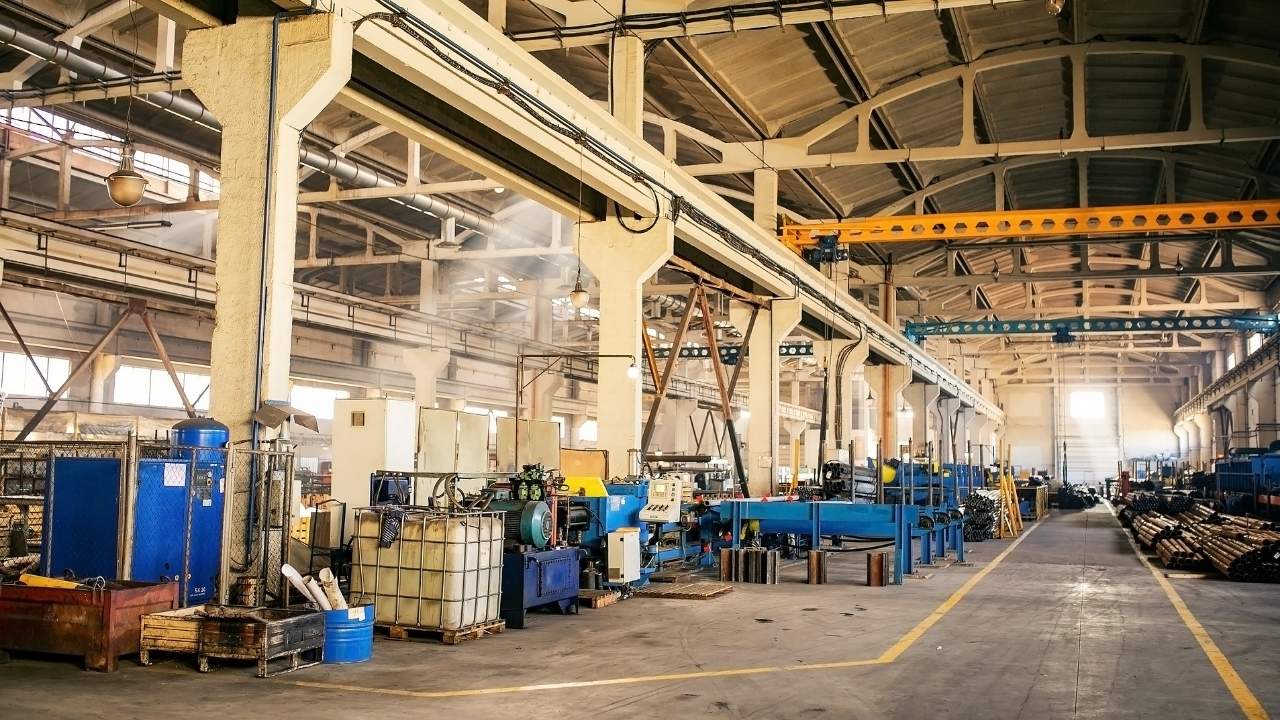Sustainability is not an option anymore, but rather a necessity. This guide outlines how to design an inventory management strategy that is beneficial for the environment while providing a sound business strategy.
Introduction
A Sustainable inventory management strategy refers to the practices and processes that organizations use to optimize their inventory to minimize waste, environmental impact, and costs while maintaining efficient operations. It balances environmental sustainability with business profitability.
Sustainable inventory management provides many benefits, including:
- Reduced waste and costs from excess or obsolete inventory
- More efficient use of space, resources, and labor
- Lower carbon footprint through lean processes
- Improved supplier relationships and supply chain transparency
- Enhanced brand reputation and competitive advantage
Foundations of Sustainable Inventory Management Strategy
Key principles of green inventory control include:
- Consider environmental impact in all inventory decisions
- Optimize inventory levels to balance sustainability and costs
- Implement just-in-time inventory flows to minimize waste
- Use technology for visibility and tracking
- Practice lean processes throughout the supply chain
- Engage sustainable suppliers and eco-friendly packaging
- Continuously measure sustainability KPIs
All inventory decisions have an environmental impact, including:
- Materials used for manufacturing and packaging
- Carbon emissions from transportation, storage, and handling
- Energy usage in facilities and equipment
- Waste from excess raw materials, packaging, or unsold finished goods
Understanding these impacts allows organizations to quantify environmental costs and minimize them through sustainable practices.
Key sustainable inventory metrics and KPIs include:
- Inventory turnover ratio
- Obsolete stock levels
- Stockout rates
- Packaging utilization rates
- Storage capacity utilization
- Energy usage per unit stored
- Carbon emissions from logistics
- Percentage of sustainably sourced inventory
Setting targets for these KPIs and regularly tracking them enables continuous measurement and improvement.
Implementing Lean Inventory Principles
- Just-in-time (JIT) inventory minimizes on-hand inventory levels by ensuring stock arrives just as it is needed for production or to meet customer demand. This reduces waste, storage needs, and carrying costs.
- Optimizing inventory requires balancing sustainability considerations with financial costs and customer service levels. Safety stock balances must be finely tuned using demand data to minimize environmental impacts.
- Strategies for minimizing obsolete items include improving demand forecasting accuracy, reducing lead times, planning inventory reductions, and disposing sustainably.
- A higher inventory turnover ratio indicates better utilization of inventory, reduced waste, and lower storage needs. Setting sustainability targets for this drives improvement.
Technology-Driven Sustainable Inventory Solutions
- Cloud-based inventory management systems like Versa Cloud ERP enable real-time visibility for tracking inventory metrics, movement, and environmental impact across the supply chain.
- AI and machine learning can optimize predictive demand planning, simulate scenarios, and prescribe inventory decisions to balance sustainability, costs, and service levels.
- IoT sensors enable tracking of inventory in storage and transit to optimize capacity, prevent waste, and plan sustainable logistics.
- RFID tags provide real-time inventory tracking and visibility to optimize flows and reduce waste.
- Blockchain facilitates supply chain transparency for all partners so decisions can be coordinated to optimize sustainable outcomes.
Advanced Forecasting and Planning Techniques
- Predictive analytics leverages data science to improve forecast accuracy, allowing optimal alignment of supply and demand to cut waste.
- Sustainable forecasting methods account for seasonal fluctuations, trends, and uncertainty to optimize inventory production and transportation.
- Demand-driven material requirements planning (DDMRP) bases inventory buffer levels and replenishment ordering on real-time demand data, resulting in more sustainable supply alignment.
- Collaborative planning with suppliers on expected demand improves commitments and flexibility for sustainable outcomes.
Sustainable Supplier Management
- Sustainable supplier selection criteria should include certifications, environmental practices, GHG emissions monitoring, resource efficiency, waste minimization, and supply chain transparency.
- Vendor-managed inventory (VMI) engages suppliers in managing and replenishing stock and optimizing quantities and logistics to minimize environmental impacts.
- Requiring green supply chain certification from suppliers ensures they adhere to sustainability standards that consider environmental impacts across their operations.
Eco-Friendly Packaging and Storage
- Sustainable packaging solutions include recycled, renewable, and biodegradable materials, using only necessary amounts to minimize waste.
- Energy-efficient storage utilizes lighting sensors, energy-efficient equipment, zoning, and technology controls to reduce consumption.
- Green warehousing leverages certified sustainable facilities, optimized layouts, space utilization, resource conservation programs, and renewable energy.
Optimizing Transportation and Logistics
- Sustainable transportation modes include trains or electric vehicles over trucks to reduce emissions. Route optimization, load consolidation, higher capacity vehicles, and driver training also help.
- Last-mile delivery optimization with technology enables route planning, load consolidation, mode shifting, or locker pickup to reduce mileage.
- Cross-docking eliminates put-away and multiple handling by transferring inbound shipments directly to outbound docks, saving energy and emissions.
Circular Economy and Reverse Logistics
- Circular economy principles include reusing products and materials across multiple lifecycles through repair, refurbishment, or remanufacturing to eliminate waste.
- Reverse logistics enables taking back used products or materials into inventory through return programs to reuse components, refurbish goods, or recycle materials.
- Sustainable disposal methods for obsolete, expired or waste inventory include donating safe surplus products, composting organic material, and recycling packaging.
Inventory Classification and Segmentation
- Sustainable classification uses schemes indicating environmental impact, material characteristics, source location or disposal requirements to optimize handling.
- Segmenting inventory by sustainability criteria allows prioritizing action on high-impact items.
- Applying ABC analysis to inventory based on environmental indicators helps focus reduction efforts on items with the greatest impact and waste risk.
Risk Management and Compliance
- Sustainable inventory risk management balances supply security with environmental impact through supplier diversification, circular supplies, and contingency planning.
- Regulatory compliance is required in many industries for responsible disposal, emissions monitoring, worker safety, environmental reporting, and supply chain disclosures.
- Environmental impact assessments help estimate the ecological effects of inventory transportation, storage, handling, and disposal to minimize harm.
Cost Reduction and Financial Considerations
- Sustainable cost reduction techniques include optimizing orders, space utilization, inventory turns, stock loss, obsolete items, storage equipment, and transportation mode and routing.
- Sustainable inventory financing options can provide access to capital for green tech investments that reduce environmental impacts and operating expenses.
- Cutting sustainable inventory carrying costs involves reducing storage space needs, equipment usage, materials consumption, waste generation, transportation emissions, and disposal impacts.
Inventory Visibility and Traceability
- Sustainable labeling standards and QR codes/RFID tags enable tracking of material types, sources, certifications, disposal requirements, and environmental impacts throughout the supply chain.
- Cycle counting improves visibility through regular audits, helping achieve sustainability targets and prevent wastage from misplaced or obsolete items.
Automation and Warehousing
- Automated warehousing efficiently utilizes space, reduces workforce needs for greener operations, and optimizes inventory flows to lower emissions.
- Optimized slotting based on inventory profiles and projections reduces picking times, storage space needs, and transportation movements for sustainability.
- Robotics and automation technology in the warehouse improves speed, accuracy, energy efficiency, waste reduction, and storage density for inventory sustainability.
Data Analytics and Performance Measurement
A. Sustainable Inventory Data Analytics
- Implement digital tracking of inventory metrics like waste, emissions, and energy use to establish baselines and identify hotspots for improvement
- Leverage predictive analytics and demand forecasting to optimize inventory levels and reduce overstocking/understocking
- Build an analytics infrastructure and dashboard to monitor key sustainable inventory KPIs in real-time
- Analyze supplier sustainability ratings during procurement to select partners aligned with inventory goals
B. Inventory Optimization Software for Sustainability
- Evaluate capabilities of various inventory optimization software for sustainability factors like waste reduction, efficient space allocation, and carbon footprint
- Choose cloud-based software that enables real-time visibility and intelligence to enhance sustainable inventory decision-making
- Ensure optimization algorithms account for sustainability constraints around shipping modes, packaging, and storage
- Integrate optimization engines with warehouse management systems to embed sustainability into standard operating procedures
C. Sustainable Inventory Performance Measurement
- Develop quantifiable metrics and KPIs for waste output, emissions, energy/water use per inventory activity
- Track sustainability metrics longitudinally to evaluate improvement over time
- Benchmark sustainability performance against regulatory standards and industry best practices
- Incorporate sustainability metrics into employee goal-setting and incentive programs to drive accountability
Employee Training and Culture
A. Developing a Culture of Sustainability in Inventory Management
- Set clear top-down sustainability policies and inventory management principles
- Foster employee ownership of sustainability goals via inclusion, consultation, and open communication
- Promote collaboration between teams on inventory sustainability initiatives
- Celebrate and recognize individuals or teams who drive impactful sustainability improvements
B. Employee Training for Sustainable Inventory Practices
- Educate all inventory staff on sustainability vision, goals, procedures, and expectations
- Conduct specialized sustainability training for inventory managers and planners
- Share the latest best practices, technologies, and regulations in ongoing sustainability training
- Verify competency and performance via assessments and certifications post-training
C. Encouraging Innovation in Sustainable Inventory Solutions
- Challenge staff at all levels to identify inventory waste and propose sustainability solutions
- Establish processes for staff to easily submit ideas for review by the sustainability team
- Host periodic brainstorming workshops to spark creative, out-of-the-box thinking
- Develop programs to formally recognize, fund, test, and scale promising ideas
Reporting and Transparency
A. Sustainable Inventory Reporting Practices
- Track an expanded set of inventory metrics encompassing sustainability KPIs
- Disclose inventory sustainability performance publicly alongside financial reporting
- Provide visibility into inventory sustainability efforts to suppliers, clients, investors, and other stakeholders
- Submit data to voluntary or mandated reporting frameworks like GRI, CDP, and SEC disclosures
B. Enhancing Transparency in Inventory Management
- Create a supplier code of conduct with sustainability requirements and expectations
- Perform regular audits and site visits of supplier/vendor facilities and operations
- Request supporting data to verify the accuracy of reported supplier sustainability metrics
- Build two-way collaborative relationships with suppliers grounded in transparency
C. Communicating Sustainability Efforts to Stakeholders
- Share inventory successes and milestones in sustainability newsletters and company publications
- Publish annual sustainability reports highlighting inventory management strategy and accomplishments
- Provide inventory sustainability training/education to external stakeholders upon request
- Submit for environmental or sustainability awards and recognition programs
Conclusion
Creating an effective sustainable inventory management strategy requires assessing and optimizing processes across the entire operation – from data practices and warehouse technologies to packaging decisions and supplier collaboration. However, as the case studies and best practices highlighted, the effort drives measurable bottom-line business value in parallel to environmental impact.
The time for action is now. Versa Cloud ERP offers a purpose-built solution to embed sustainability into the core of enterprise inventory management.
Schedule a demo from our team of experts to receive a customized blueprint showcasing how Versa Cloud ERP provides data-driven insights to reduce waste, drive efficiency, and accelerate your company’s sustainability journey. Let’s connect to explore where your current inventory management strategy can be augmented with sustainable principles to drive enhanced business performance through a commitment to sustainability.
A Business in the modern day is complex and requires resources to deliver on its goals and achieve its full potential. To create a small business success story business owners need an ERP system that grows with them.
Effectively manage your financials, inventory, and production workflows with our award-winning ERP.
Let Versa Cloud Erp’s do the heavy lifting for you.
[widget id=”custom_html-40″]
[widget id=”custom_html-42″]
[widget id=”custom_html-30″]
Do Business on the Move!
Make your businesses hassle-free and cut the heavyweights sign up for the Versa Cloud ERP today!!
Join our Versa Community and be Future-ready with us.
[widget id=”custom_html-20″]






